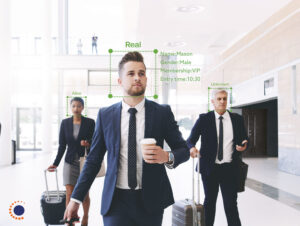
In the previous article, this question came forward: “How can VMS’s today help end users with their post-pandemic needs?” and aspects like Facilitating health screening and Ensuring social distancing. Now we’re going to cover the other aspects.
Contact tracing
In the event a visitor is later confirmed to be sick, contact tracing or knowing whom the visitor has been in contact with in the end user entity is important. Individual organizations have a unique opportunity to effectively support this requirement; visitor management systems can provide accurate, complete, and real-time information on exactly who was where, when – including employees, contractors and essential visitors. This data supports automated emergency outreach to ‘everyone who was in the West Coast manufacturing plant on Tuesday’ to effectively communicate health outbreaks (or other emergency concerns).

A visitor management system is almost purpose-built for contact tracing – allowing companies to see who’s been on and off site in real time. Users should be able to not only view information on a singular basis, but this needs to be cross-referenced against other team members and visitors on site at the same time.
Security and privacy tips
In the post-pandemic world, the visitor management system should be highly customizable to local health requirements and interoperable with other security/non-security systems.
A VMS needs to be tailored to an organization’s visitor workflows and workplace needs (compliance); choosing the right VMS will come down to scalability and customization to complement internal processes. Ensure, if it’s cloud-based, you understand how infrastructure provides security and if the software itself passes general audits like SOC1/SOC2 compliance.
Indeed, the visitor management system must be secure to protect company assets and earn user trust. From an infrastructure perspective, to support the vast requirements, organizations should work with vendors that are enterprise focused and support robust cloud-based options (e.g. SOC2 certification, scalable architecture, single tenancy options, data retention policies, etc.). It’s important that security leaders engage with their IT counterparts to ensure deployments pass the appropriate security audits and that data residency and deletion policies are adhered to when the system is deployed.

The system must also ensure user privacy is protected. Privacy is key to employees feeling comfortable sharing basic health information in an effort to keep the workplace safe. Customers set criteria for who is allowed to work onsite based on answers to health questions, but can choose to retain or purge individual responses to sensitive questions.
The visitor management system should allow organizations to choose which visitor data to capture and store based on their PII requirements and determine how long data is stored to meet GDPR requirements. Stored data creates a comprehensive audit trail for the visitor, host and visit details. Therefore, the system should have extensive reporting capabilities to include customized reports and automatic scheduling of report distribution.
Adapted from a&s Magazine



































































